Originally published in March, 2018
Rotterdam is one of the second largest city in the Netherlands and it's known for being the biggest European port. The city is extremely dynamic, if you just think that it completely reinvented itself after being destroyed by bombs in the Second World War.
You might have heard of Rotterdam for its peculiar architectures (the Markthal, the Erasmusburg, Rotterdam Central Station and many others) but what you might not know is that Rotterdam is mostly below sea level, and is greatly threathened by climate change and its extreme weather conditions (heavier rainstorms, higher water levels in the Meuse, longer drought and heat waves).
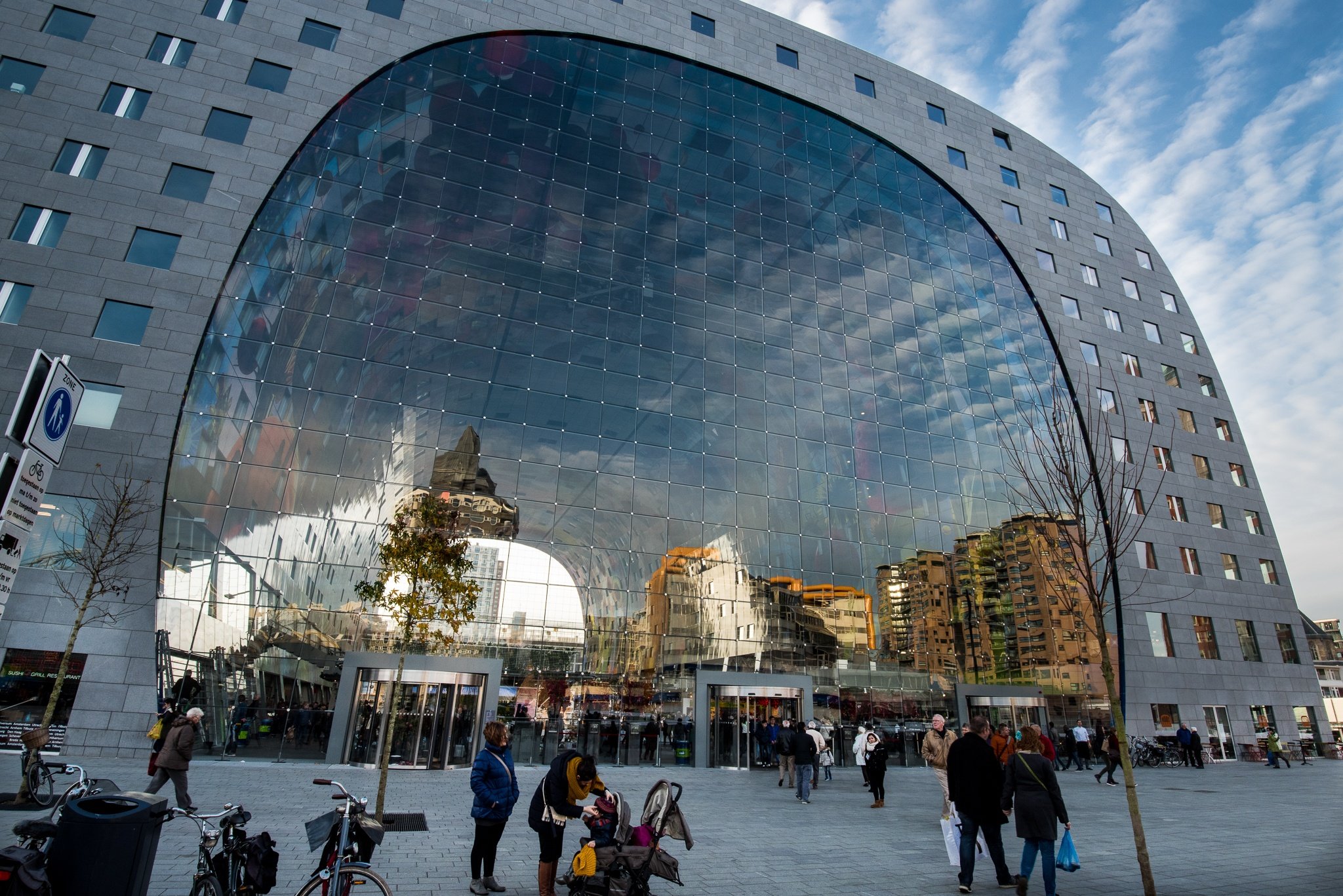 Rotterdam's markthal.
Rotterdam's markthal.
However, Climate change could create many opportunities that may strengthen the economy of the city and its port, increasing the biodiversity and encouraging participation. The city developed the Rotterdam Climate Change Adaptation Strategy to make Rotterdam "climate proof" by 2025.
What does it mean to be "Climate Proof" by 2025?
Being "Climate Proof" means that by 2025 all the necessary measures will have to already been taken in order to be as resilient as possible to Climate Change.
To maintain and improve the already existing infrastructure (for example the storm surge barriers, dykes and pumping stations) is extremely important. However, those won't be enough to ensure climate change resiliency. Adaptations must be developed on a big and small scale.
What will be the consequences of Climate Change in Rotterdam?
Have you ever wondered what protects Rotterdam? The answer to this question is dunes along the coast, dykes along the river and the Maeslant Storm Surge Barrier.
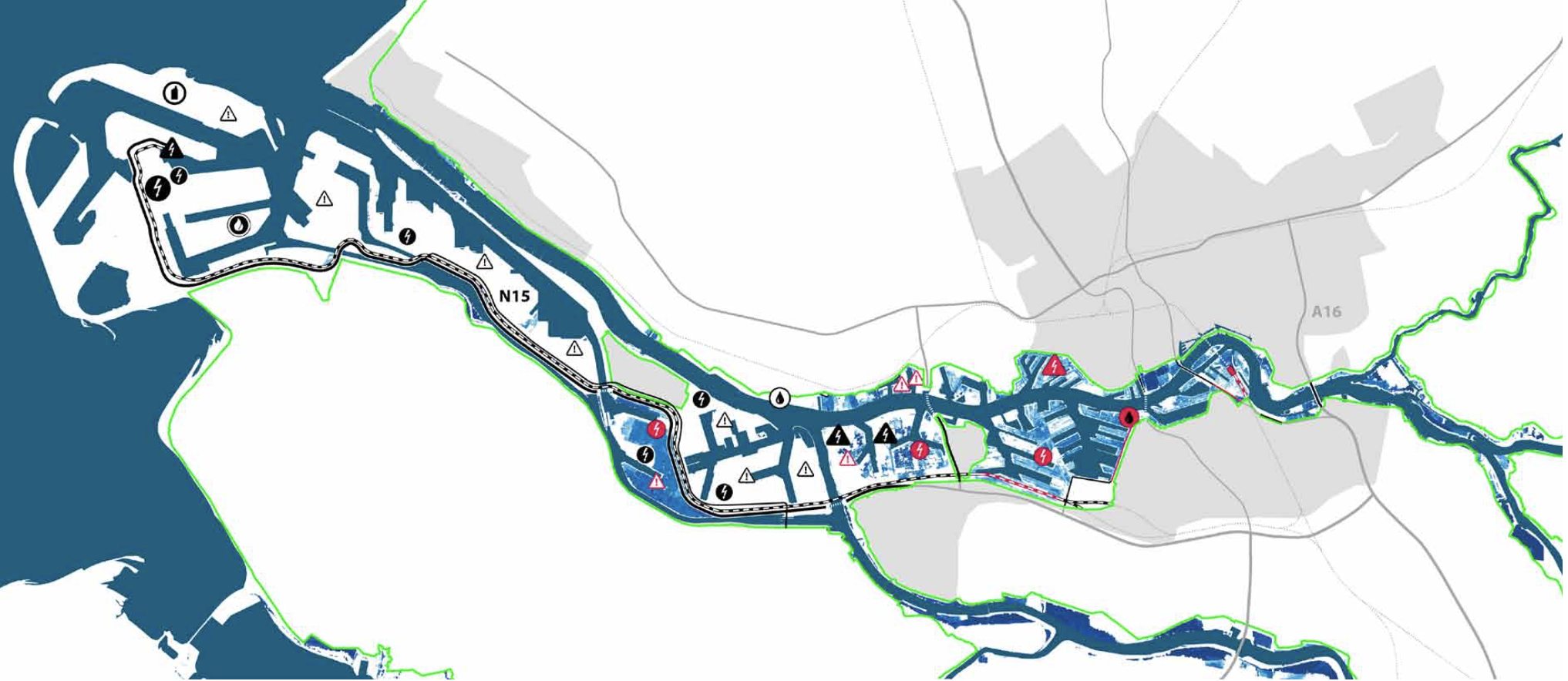
Map of Rotterdam, in light green the primary dyke is marked. Whatever lies behind that line is inner-dyke, all the areas in front of it are part of the outer-dyke areas [Image credit: ROTTERDAM.CLIMATE.INITIATIVE].
Risks in the outer dyke areas
In the above picture, the light green line represents the dykes of Rotterdam. The outer dyke area is quite consistent and it also includes the port area. The only protection that this area has, at the moment, is the Maeslant Storm Surge Barrier. All the outer dyke areas have been already heightened above the NAP level, however, due to the consequneces of Climate Change, extra protection is needed.
Consequences of heavy rainfalls
During Summer heavy rainfalls can already be experineced in Rotterdam. However, with Climate Change they are expected to be more intense and frequent: and as a consequnece the urban areas inside the dykes will be more likely flooded and damaged.
Consequences of longer droughts
Climate change, beside bringing more heavy rainfalls, will also bring longer droughts: chances of an extremely dry summer will increase from once every 10 years to once every 2 years. Droughts will lower the ground water table, which will cause land subsidence, instability of peat dykes and of all the building built on poles. It will also lower the river levels, which will result in salinization: the tide will be able to reach more inland canals. The worst thing about salinization is that it threatens the aquatic ecosystems.
There are three inlet points (see map below), so one could say that they could be easily kept closed, however, in order to manatin the right water level in the canals, water needs to be let in.

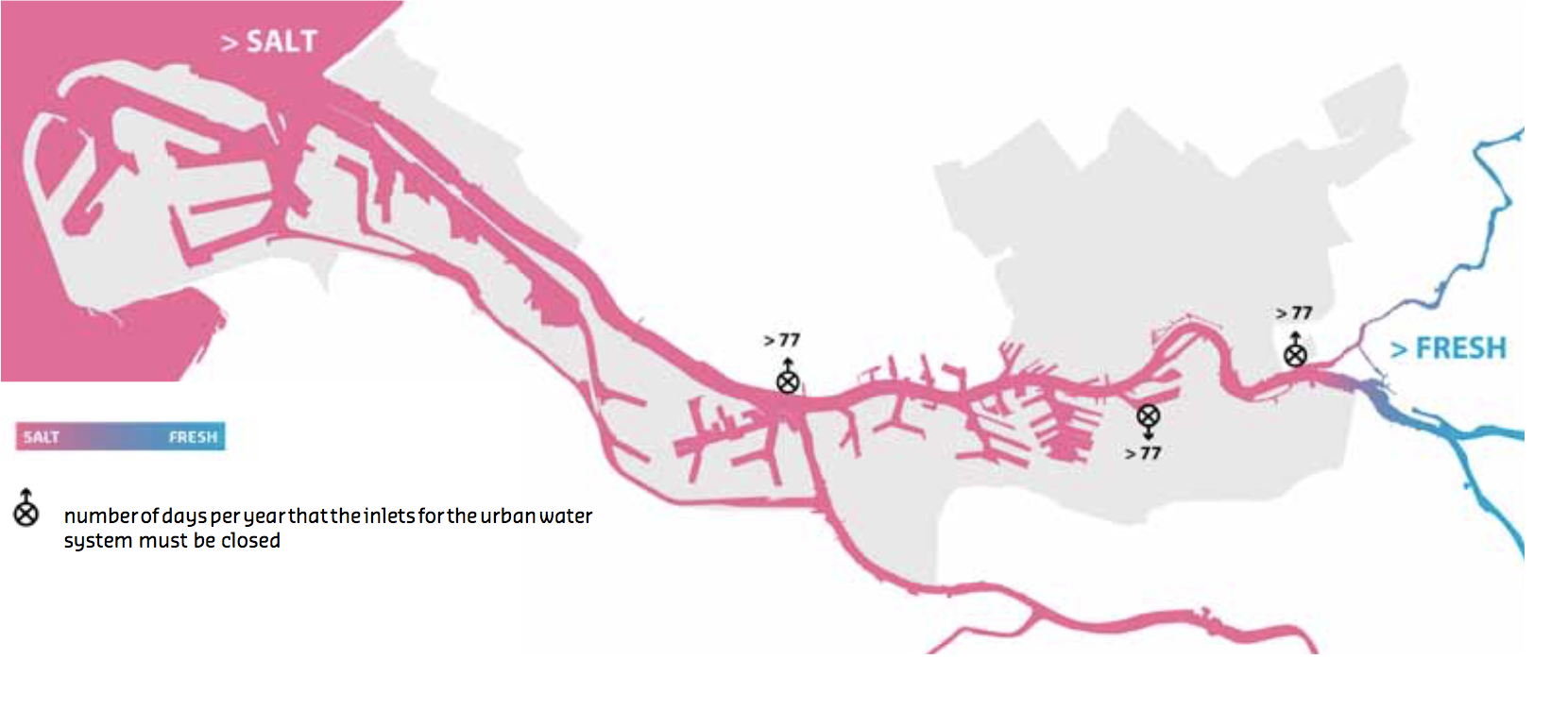 In the picture above today's situation is shown. In the bottom picture the situation predicted for 2050 is shown. In pink salt water is represented [Image credit: ROTTERDAM.CLIMATE.INITIATIVE].
In the picture above today's situation is shown. In the bottom picture the situation predicted for 2050 is shown. In pink salt water is represented [Image credit: ROTTERDAM.CLIMATE.INITIATIVE].
Solutions for higher water levels: outer dyke areas
In order to protect the outer dyke area, both prevention and adaptation measures must be adopted. The outer dyke areas will be raised till 3 to 5.5 metres above the NAP, and the storm surge barrier will be closed more often. Adaptive buildings (e.g. floating houses) need to be implemented. Nature also provides opportunities for the adaptive design of outer-dike areas, for example tidal forests and green banks.
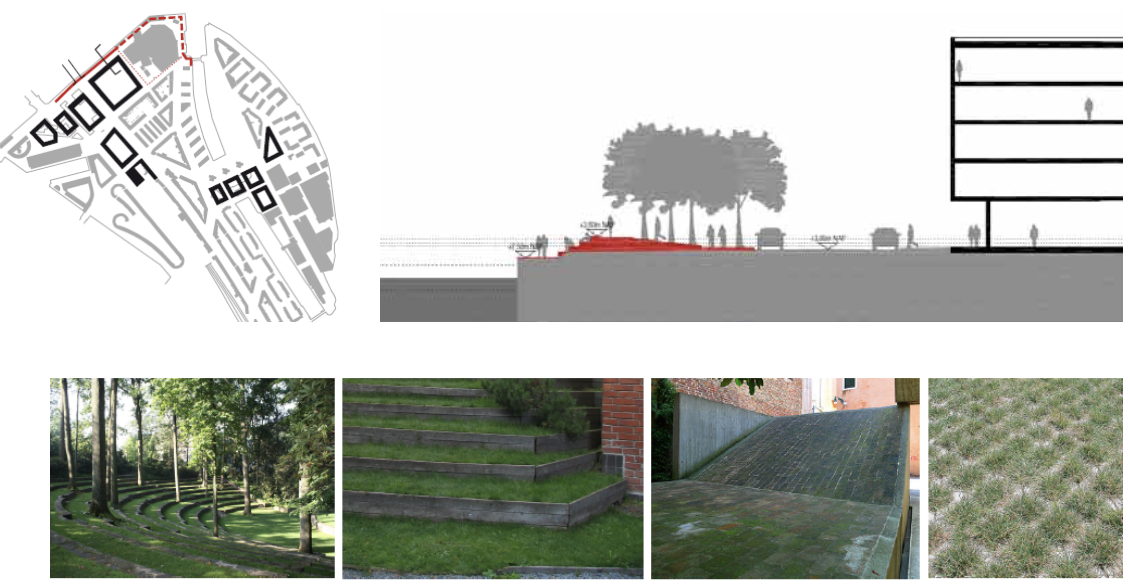 Protective quay wall [Image credit: ROTTERDAM.CLIMATE.INITIATIVE].
Protective quay wall [Image credit: ROTTERDAM.CLIMATE.INITIATIVE].
Solutions for extreme rainfalls: green roofs and water squares
In 2013 Rotterdam created the first full-scale water square, in order to prevent pluvial floods, proving that those are a valuable option.
When a heavy rainfall occurs water is unable to infiltrate through the soil because Rotterdam is mostly paved. Water that runs off hard surfaces and roofs reaches the water square, which acts as a water storage (that can hold up till 1.7 million liters of rainwater). When dry, the square can be used as a basketball and skateboard court. Once the rainfall is over, the rainwater is pumped out into canals.
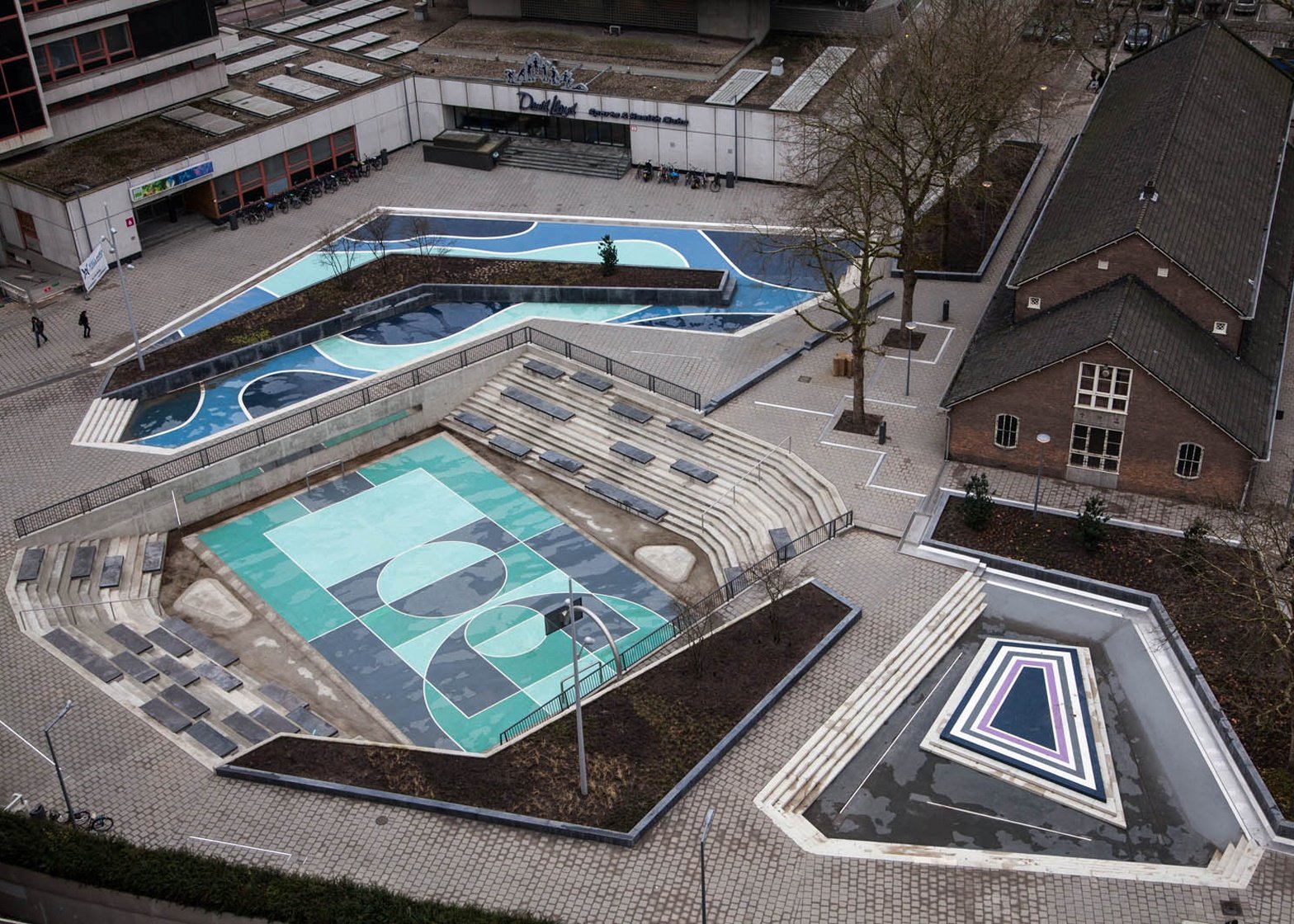
Rotterdam's Benthemplein [Image credit: Pallesh Azarfane]
By 2012, Rotterdam already counted around 100'000 squared metres of green rooftops.
Those seems quite a small measure, however, they create a buffer zone that absorbs excess of rainwater, increase the green in the city, filters dust particles from the atmosphere and extends the life of the roofs.
Solutions for extreme droughts
The solution is to retain rainwater and replainish the ground water when possible. So by creating more water surfaces where water can be retained, creating new ditches, canals, and lakes that act as “climate buffers”. The amount of paved surfaces will be lowered, making the city act like a sponge (for example, rain and facade gardens).
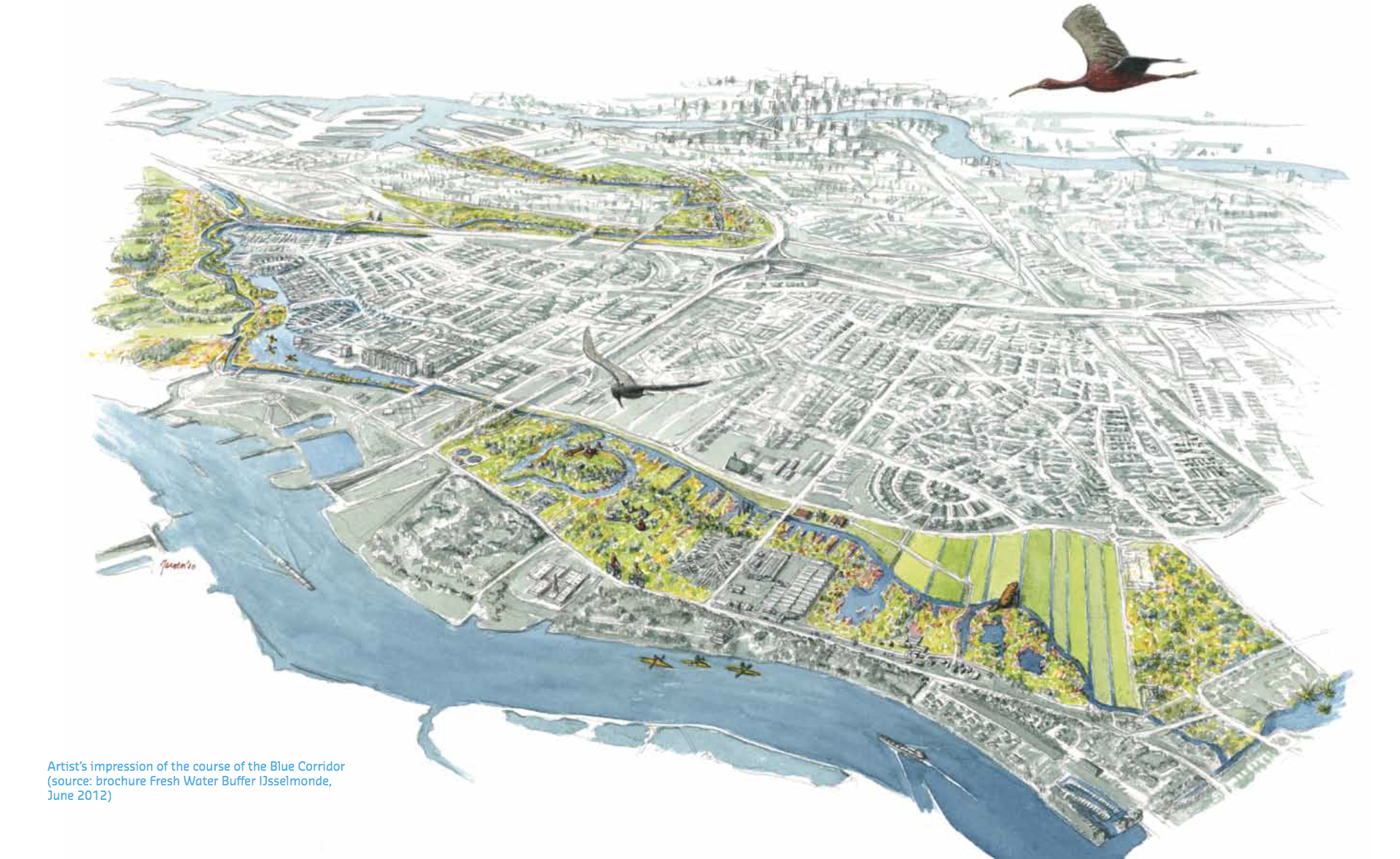
In 2012, the construction of the Blue Corridor began. This is a green-blue link between the Zuiderpark in Rotterdam and the Zuidpolder in Barendrecht. [Image credit: ROTTERDA.CLIMATE.INITIATIVE].
Are you interested in reading more about Rotterdam's adaptations? Then read this blog to know more about the measures that this beautiful city implemented over time :)
